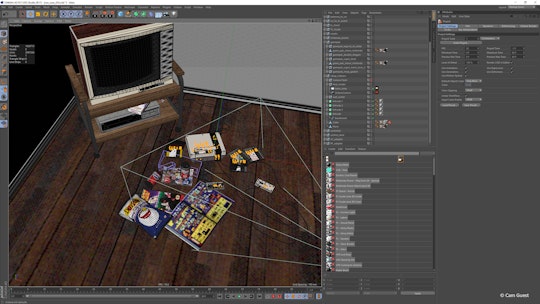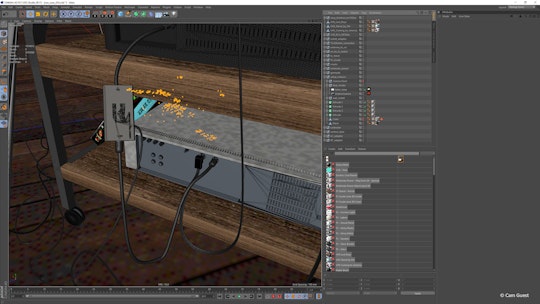
Getting Started is Easy For his first attempts at 3D, Cam Guest got his inspiration from childhood memories and takes us back to 1989.
When starting a new job, many people see it as a valuable opportunity to learn new skills and expand their professional profile. Cam Guest was no different when he started his new job as associate creative director at a media company in 2016. Since the company uses Cinema 4D to create product visualizations, he got acquainted with the software very quickly. Even though his job didn't require experience with Cinema 4D, Cam wanted to gain more in-depth knowledge of his team's work so he could better assess their work. So he decided to learn Cinema 4D in his spare time.
Since he had never worked with 3D software before, he started by searching online for beginner tutorials and discovered Grayscalegorilla.com. Cam used their videos to learn how the various tools in Cinema 4D work and how to create an efficient workflow. The more he learned, the more he wanted to finally start his own project. He dug one of his fondest childhood memories out of the closet, which had a shape that was perfect for a maiden modeling project: his old Nintendo Entertainment System. Released in 1985 in the USA, this gaming console not only spawned Cam's memories but also sparked his creativity: "I really wanted to capture a feeling of that care-free childhood when you finish school for the summer and all of a sudden have all this free time on your hands and no restrictions. I had spent a lot of time with friends playing Nintendo until the wee hours of the morning and it's something I look back on fondly," remembers Cam.


Cam excitedly started modeling the NES case, which was quite a challenge for him as a beginner. He looked for an easier way to model and decided to create a schematic illustration of the NES module in Illustrator and extrude it in Cinema 4D. This did the trick and Cam had his very first 'aha' experience with Cinema 4D, and he also used this method to model the NES case. Cam bought a caliper so he could scale the console to the correct size. Using photos, he even built the motherboard and the entire inner workings of the NES, including all components, to scale. His attention to detail can also be seen in the console's wiring, which is exactly like the real NES. The game modules and the controllers and their circuits are meticulously modeled. Many of these finely modeled details aren't even shown in the final rendering. For example, a completely modeled antenna setup is hidden behind the television!
The next big challenge was texturing the models: after quite a bit of experimentation, Cam stumbled across a tutorial from School of Motion that helped him understand how the Cinema 4d UV tools work so he could texture his models to make them look realistic. By combining various material channels, he added a range of details such as scratches, finger smudges and other irregularities.

Cam needed other objects from the past to round off the scene and engulf the viewer in the 1980s. He searched the Web for reference material such as televisions and video recorders of the time and modeled these in Cinema 4D. Cam modeled every object himself, with the exception of the Coke can - an exercise that taught this Cinema 4D newcomer quite a lot!
"In the end, this was an exercise in pure joy. I absolutely loved the problem solving, the attention to detail and trying to make my final scene as realistic as possible" says Cam about his work on the project. "I spent endless nights until 4-5am modeling on one screen while having Twitch open on the other. I've played virtually no video games in this time, even though I have a GeForce GTX 1080Ti under the hood!"
Cam Guest Website
http://www.camguest.ca/






